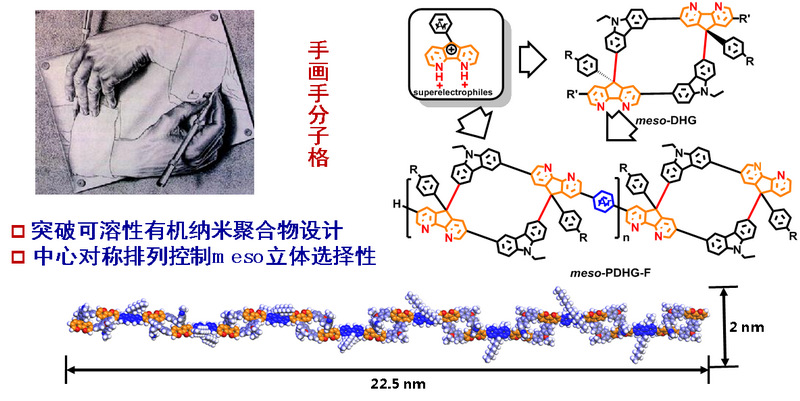The team led by academician Huang Wei and Professor Xie Linghai from the Institute of Advanced Materials (IAM) in our university has made a major breakthrough in the field of organic nanopolymers. The research on stereo-selective gridization and polygridization with centrosymmetric molecular packing was published online on April 9 in the international top journal Nature Communications. As for the paper, Professor Xie Linghai and academician Huang Wei are corresponding authors, while Lin Dongqing, a PhD candidate, and Dr. Wei Ying, a young teacher, are co-first authors of the paper.
In this study, an A2B2-type nanosynthon was subtle designed by the team, which not only effectively takes the structural regularity of organic nanopolymers by avoiding the cross-linking pathway, but also exhibit impressive stereo-selectivity. Gridization mechanism of meso-selectivity involves antiparallel and centrosymmetric packing during the dimerization of protonated nanosynthons with the end of carbazole donors and the other side of superelectrophilic diazafluorenes that results in the kinetic control rather than thermodynamic control in the scenario of “synergistically molecular attractor-repulsor theory, SMART”. These nanogridarenes in angle-lost shape resemble the famous lithograph art of “Drawing Hands” first printed by the Dutch artist M. C. Escher in January 1948.; thus, Drawing Hands type gridarenes (DHGs) was coined for this kind of nanopolymers, implicated their crucial function of hands linkage in molecular society and worlds.
LINK:https://www.nature.com/articles/s41467-020-15401-x




